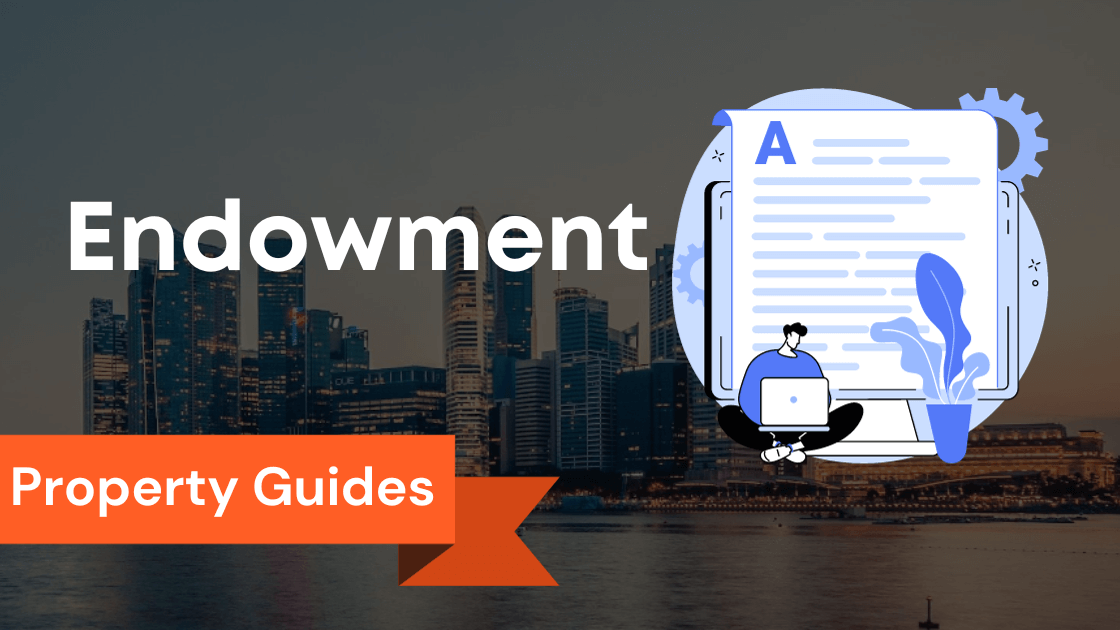
What is EMI?
EMI in Loan, which stands for Equated Monthly Installment, is a fixed monthly payment made by borrowers to lenders to repay a loan.
It is the combination of principal amount and interest accumulated on the Loan, divided equally over the loan tenure.
EMI is commonly used in relation to personal loans, car loans, home loans, and other types of financing.
Definition of EMI
EMI is calculated using a specific formula that takes into account the loan amount, interest rate, and loan tenure.
The formula to calculate EMI is:
EMI = [P x R x (1+R)^N] / [(1+R)^N-1]
Where:
- P is the principal loan amount
- R is the monthly interest rate (annual interest rate divided by 12)
- N is the number of monthly installments
The loan tenure is the time period within which the Loan is to be repaid.
It is usually expressed in months or years.
Lenders may offer various loan terms, such as 1 year, 3 years, 5 years, etc., depending on the type of Loan.
How is EMI calculated?
To calculate your EMI, you can use an EMI calculator available online or use the above formula.
By inputting the loan amount, interest rate, and tenure, the calculator provides you with the monthly installment amount.
This helps you plan your finances accordingly and assess your repayment capability.
The EMI calculation process considers both principal repayment and interest payment.
In the initial stages of the loan tenure, a significant portion of the EMI goes towards interest payment.
As the tenure progresses, the principal repayment component increases, resulting in a decrease in the interest payment component.
Factors that affect EMI
Several factors influence the EMI amount.
These include:
- Interest Rate: The interest rate charged by the lender significantly affects the EMI. Higher interest rates result in higher EMIs and vice versa.
- Loan Amount: The higher the loan amount, the higher the EMI will be.
- Loan Tenure: Longer loan tenures lead to lower EMIs, as the repayment is spread over a more extended period.
- Credit Score: A good credit score may qualify you for a lower interest rate, resulting in a lower EMI.
- Income: Lenders consider your income to determine your eligibility for a loan and assess your repayment capacity.
- Type of Loan: Different types of loans carry different interest rates, affecting the EMI amount.
- Repayment Schedule: The EMI amount also depends on whether the repayment schedule is monthly, quarterly, or annually.
http://www.youtube.com/watch?v=x8_xg8Mdk2Y
Understanding EMI is crucial for borrowers as it helps them plan their financial commitments and gauge affordability.
By considering the factors mentioned above, borrowers can choose an EMI that aligns with their budget and financial goals.
Key Takeaways
- EMI Definition: EMI stands for Equated Monthly Installment, a fixed monthly payment for repaying loans, including both principal and interest.
- EMI Calculation Formula: EMI is calculated using the formula EMI = [P x R x (1+R)^N] / [(1+R)^N-1], where P is the principal loan amount, R is the monthly interest rate, and N is the number of monthly installments.
- Factors Affecting EMI: Several factors impact the EMI amount, including the interest rate, loan amount, loan tenure, credit score, income, type of loan, and repayment schedule.
- Understanding EMI: Understanding EMI is crucial for borrowers to plan their financial commitments and assess affordability.
- EMI Calculation Example: An example calculation is provided to demonstrate how to calculate EMI for a loan.
- EMI Calculators: Online EMI calculators are recommended for easy and quick EMI calculations.
- Types of Loans: EMI is relevant for various types of loans, including personal loans, home loans, and car loans.
- Home Loan EMI: Home loan EMIs include both principal and interest and can be affected by factors like loan amount, interest rate, and loan duration.
- Car Loan EMI: Car loan EMIs can be calculated using similar principles and can be influenced by down payments and interest rates.
- Tips for Reducing EMI: Strategies for reducing EMI include choosing a longer loan tenure, making larger down payments, and negotiating for lower interest rates.
How to Calculate EMI: Formula to Calculate EMI

EMI formula
Calculating the Equated Monthly Instalment (EMI) for a loan is essential to understand how much you need to repay each month.
The EMI formula takes into account the loan amount, rate of interest, and loan period or duration.
The formula to calculate EMI is:
EMI = P × r × (1+r)^n / ((1+r)^n-1)
Where:
EMI = Equated Monthly Instalment
P = Principal Loan Amount = Monthly Interest Rate (Annual Interest Rate divided by 12)n = Loan Tenure in Months
By plugging in the values for these variables, you can calculate your monthly repayment amount.
Example of EMI calculation
Let’s consider an example to understand better how to calculate EMI.
Say you have taken a loan of $10,000 at an annual interest rate of 10% for 5 years (60 months).
Using the EMI formula, the calculation would be as follows:
EMI = 10,000 × (10/12) × (1+(10/12))^60 / ((1+(10/12))^60-1)
This calculation results in a monthly EMI of approximately $212.47.
This means you would need to pay $212.47 every month for 5 years to repay the Loan fully.
EMI calculators
To simplify the process of calculating EMI, there are various online EMI calculators available.
These calculators allow you to enter the loan amount, interest rate, and loan tenure to get the EMI amount instantly.
Using an EMI calculator can save you time and effort, especially when dealing with complex loan parameters or calculating EMIs for multiple loans.
It can also help you compare different loan options and choose the one that best fits your financial situation.
It’s important to note that EMI calculators typically use either the reducing-balance method or the flat-rate method to calculate EMIs.
The reducing-balance method considers the outstanding loan amount while calculating interest, resulting in lower EMIs over time.
The flat-rate method, on the other hand, calculates EMIs based on the original loan amount, resulting in higher EMIs.
Before using an EMI calculator, gather the necessary details about your Loan, such as the loan amount, interest rate, and loan tenure.
Keep in mind that your monthly income, expenses, and other financial obligations should also be considered before finalizing a loan.
http://www.youtube.com/watch?v=3bzAPbbJtUo
Calculating EMI is an essential step when applying for loans, whether they are unsecured loans, auto loans, student loans, or any other type of Loan.
By understanding how EMIs are calculated and using tools like EMI calculators, you can make informed financial decisions and manage your loan payments effectively.
EMI for Different Types of Loans: Personal Loan, Home Loan, Car Loan

EMI for Personal Loans
When it comes to personal loans, understanding the concept of EMI (Equated Monthly Installment) is essential.
An EMI is a fixed amount that borrowers have to pay every month towards loan repayment, consisting of both the principal loan amount and the interest.
It helps individuals effectively manage their budgeting.
Before applying for a personal loan, it’s essential to know the loan amount you need, the interest rate offered by different lenders, and the loan tenure.
Many financial institutions and online calculators provide easy tools to calculate EMI based on these factors.
Additionally, borrowers should consider loan eligibility criteria and factors like credit history, income, and employment stability.
Some lenders may allow prepayment of the Loan, but it’s crucial to understand the terms and conditions for this facility.
EMI for Home Loans
Home loans are a significant commitment for most individuals.
Understanding the EMI for home loans is crucial to managing finances effectively throughout the loan tenure.
The EMI for a home loan consists of both the principal amount and the interest charged by the lender.
Several factors affect the home loan EMI, such as the loan amount, interest rate, and loan duration.
Reducing the EMI can be achieved by either opting for a shorter loan duration or negotiating a lower interest rate.
It’s important to note that home loans are usually secured loans, where the property serves as collateral.
Borrowers should be aware of the loan amortization schedule and the outstanding loan balance throughout the loan tenure.
EMI for Car Loans
Car loans allow individuals to fulfill their dream of owning a car.
Understanding the EMI for car loans is important before deciding to finance a car purchase.
An EMI calculator can be used to determine the monthly installment based on factors such as the loan amount, interest rate, and loan tenure.
When applying for a car loan, borrowers should explore different loan options and compare offers from various lenders.
The loan provider will assess factors such as credit history, income, and employment stability to determine loan eligibility.
It’s essential to consider the total cost of the Loan, including the interest paid over the loan tenure.
Some lenders may offer attractive interest rates, but the genuine interest paid may be significantly higher due to a longer loan tenure or high processing fees.
In conclusion, understanding EMI for different types of loans is crucial for borrowers to manage their finances effectively.
Whether it’s a personal loan, home loan, or car loan, individuals should consider factors like loan amount, interest rate, and loan duration before making any financial commitments.
Using online calculators and comparing different loan options can help borrowers make informed decisions.
Tips for Reducing EMI

Choose a longer loan tenure
When it comes to reducing your EMI (Equated Monthly Installment), one option is to choose a longer loan tenure.
The loan tenure refers to the duration of the Loan, usually measured in months.
By opting for a longer loan tenure, you can spread out the repayment of the Loan over a more extended period, which in turn reduces the amount of each monthly installment.
This can be particularly beneficial if you have a tight monthly budget and need to minimize your EMI.
However, it is important to note that choosing a longer loan tenure means that you will end up paying more in interest throughout the Loan.
Therefore, it is essential to carefully evaluate your financial situation and determine if this option is suitable for you.
Make larger down payments
Another effective strategy to reduce your EMI is to make larger down payments.
When you take out a loan, you often have the option to pay a certain percentage of the total loan amount as a down payment.
By increasing the amount of your down payment, you can reduce the principal amount of the Loan.
This, in turn, will result in a lower EMI.
Making larger down payments can also reduce the overall interest paid over the loan tenure.
Additionally, it can shorten the time frame for repaying the outstanding loan amount.
If you have the financial means to do so, making larger down payments is a smart move.
Negotiate for lower interest rates
The interest rate on your Loan plays a significant role in determining your EMI.
Therefore, it is worth your while to negotiate for lower interest rates.
Start by researching the prevailing interest rates in the market and compare them across different lenders.
Armed with this information, you can approach your lender and ask for a lower interest rate.
Negotiating for lower interest rates may require some persistence and negotiation skills, but the potential cost savings can be significant.
Lower interest rates can result in a lower EMI, reduced total interest paid over the loan tenure, and potentially shorter loan duration.
In conclusion, reducing your EMI requires careful consideration of various factors such as loan tenure, down payments, and interest rates.
By choosing a longer loan tenure, making larger down payments, and negotiating for lower interest rates, you can effectively lower your EMI and make your loan repayment more manageable.
Please note that specific loan terms, eligibility criteria, and interest rates may vary depending on the lender and type of Loan.
It is advisable to consult with a financial advisor or perform thorough research before making any loan-related decisions.
EMI in Singapore: Understanding Equated Monthly Installments

Average EMI rates for different types of loans in Singapore
When applying for a loan in Singapore, it’s important to understand the concept of Equated Monthly Installments (EMIs).
EMI refers to the fixed amount that borrowers must repay to their lenders on a monthly basis, which includes both the principal amount and the interest charged on the Loan.
The average EMI rates for different types of loans in Singapore vary depending on the lending institution and the specific loan product.
For example, real estate mortgages generally have lower EMI rates due to the longer loan tenures and lower interest rates offered by banks.
On the other hand, personal loans and credit card loans often have higher EMI rates due to their shorter repayment periods and higher interest rates.
To make an informed decision, borrowers should carefully consider the annual interest rate and rate of interest charged by different lenders.
By comparing EMI rates, borrowers can assess their financial commitments and choose a loan that fits their repayment capabilities.
Trends in EMI rates in Singapore
In recent years, EMI rates in Singapore have remained relatively stable.
However, it’s important to note that interest rates are subject to market fluctuations and may change over time.
Borrowers should keep an eye on the trending EMI rates to ensure they are getting the best possible deal.
Applying for a loan in Singapore is relatively simple, with minimal documentation required.
Many lenders offer online application services, making it convenient for borrowers to compare EMI rates and choose the most suitable loan option.
How to compare EMI rates from different lenders
When comparing EMI rates from different lenders, borrowers should consider the interest rate, loan tenure, and repayment capabilities.
It’s important to choose a loan with a competitive interest rate that aligns with your financial situation.
To get a better understanding of the EMI rates, borrowers can utilize online EMI calculators provided by lending institutions.
These calculators allow borrowers to input the loan amount, interest rate, and tenure to estimate the monthly installment.
Additionally, borrowers should consider any additional features or benefits offered by the lender.
For example, some lenders may provide a moratorium period for borrowers who face unexpected financial difficulties or a medical emergency.
In conclusion, understanding EMI rates is crucial when applying for a loan in Singapore.
By comparing EMI rates from different lenders, borrowers can make an informed decision and choose a loan that suits their financial needs.
It’s essential to consider the interest rate, loan tenure, repayment capabilities, and any additional benefits offered by the lending institution to ensure a smooth and affordable borrowing experience.
Conclusion
EMI in Loan Singapore Conclusion
In conclusion, understanding EMI (Equated Monthly Installment) is crucial when it comes to managing loans in Singapore.
By calculating your EMI in loan using a loan EMI calculator, you can determine the amount you need to pay towards your Loan each month.
This helps you plan your finances better and ensures that you can repay your loan without any hassle.
One important factor to consider is the interest rate.
Whether it’s a fixed or floating rate of interest, it affects the EMI amount and the total amount you pay towards your Loan.
It’s essential to compare loan interest rates to choose the most favorable option for you.
During the entire loan tenure, your EMI consists of both the interest and principal components.
In the initial stages, a significant portion of the EMI goes towards paying off the interest on the Loan.
As you progress, a higher proportion is allocated towards repaying the principal amount.
Another benefit of an EMI is that it allows you to repay your Loan over a specific period, known as the loan repayment tenure.
This can range from a few months to several years, depending on the loan amount and interest rate.
By using this calculator, you can determine the total amount you need to pay towards the Loan and plan your finances accordingly.
Whether you’re looking to avail a home loan, car loan, or a personal loan, understanding the EMI is essential.
It helps you assess your financial capability and plan your budget accordingly.
It’s important to note that an EMI is neither the total loan amount nor just the interest on the Loan.
It includes both the goods and principal, ensuring that you pay back the entire loan amount over time.
In addition to traditional loans, credit cards with an EMI option are also available.
This allows you to make purchases and convert them into EMIs, making it easier to manage your finances.
Overall, understanding and managing your loan EMIs in Singapore is crucial for a stress-free borrowing experience.
By utilizing loan EMI calculators and comparing interest rates, you can choose the most suitable loan option and stay on track toward financial stability.
Remember to consult with financial experts or Loan providers to get accurate information and advice tailored to your specific needs.
With the proper knowledge and planning, you can efficiently manage your loans and achieve your financial goals.
Frequently Asked Questions
What is an EMI?
EMI stands for Equated Monthly Instalment.
It is the fixed monthly payment made by a borrower to the lender until the Loan is fully repaid.
The EMI consists of both the principal amount and the interest charged on the Loan.
How is EMI calculated?
EMI is calculated using a formula that takes into account the loan amount, interest rate, and loan tenure.
The formula to calculate EMI is as follows: EMI = P * r * (1 + r)^n / ((1 + r)^n – 1)
What is an EMI calculator?
An EMI calculator is a tool that helps borrowers calculate their monthly installments for a loan.
By entering the loan amount, interest rate, and Loan tenure, the EMI calculator provides an estimate of the EMI amount.
What are the different types of loans that use EMIs?
EMIs are used to repay various types of loans such as personal loans, home loans, car loans, etc.
These loans have a fixed EMI amount that borrowers need to pay every month until the Loan is fully repaid.
How is the interest calculated in an EMI?
In an EMI, the interest is calculated based on the outstanding principal balance.
As the Loan is gradually repaid, the interest component decreases, and the principal component increases in each EMI payment.
What factors affect the EMI amount?
The EMI amount is affected by factors such as the loan amount, interest rate, and loan tenure.
A higher loan amount or interest rate and a longer loan tenure will result in a higher EMI amount.
Can I prepay my Loan before the end of the tenure?
Yes, most lenders allow borrowers to prepay their Loan before the end of the tenure.
However, there may be prepayment charges or penalties involved, which vary across lenders.
It is advisable to check with the lender regarding their prepayment policies.
What is the difference between principal and interest in an EMI?
In an EMI, the principal amount is the initial loan amount borrowed, while the interest is the amount charged by the lender for lending the money.
Each EMI payment includes a portion of the principal and the interest component.
Can I calculate the EMI for different loan amounts using an EMI calculator?
Yes, an EMI calculator allows you to calculate the EMI for different loan amounts.
By inputting different loan amounts, interest rates, and loan tenures, you can quickly determine the EMI amount for various scenarios.
Is it possible to convert credit card purchases into EMIs?
Yes, many credit cards offer the option to convert purchases into EMIs.
This allows cardholders to repay their expenses over a fixed tenure with regular EMIs, similar to a loan.
However, interest rates and terms may vary across different credit cards.












